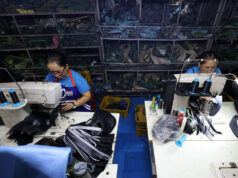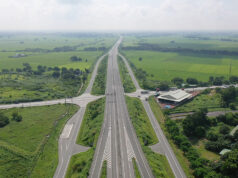‘Significant’ hit to economy seen in 1st quarter; magnitude uncertain
THE ECONOMY is expected to “significantly” slow down in the first quarter after the government imposed lockdown measures that halted much economic activity, on top of global supply chain disruptions dating back from China’s COVID-19 outbreak, economists said.
In their February issue of The Market Call released yesterday, First Metro Investment Corp. (FMIC) and University of Asia and the Pacific (UA&P) said: “Undoubtedly, Philippines GDP growth will take a big (hit) in Q1 thanks to COVID-19, albeit the magnitude remains uncertain.”
FMIC and UA&P said the blow to both the global and Philippine economies will be “significant” in the first half.
Socioeconomic Planning Secretary Ernesto M. Pernia has said the economy can still expand by 5% in the first quarter while Bangko Sentral ng Pilipinas (BSP) Governor said positive growth is still possible at around 3% during the first quarter.
ING Bank NV- Manila estimates that a 5.3% GDP expansion is still possible this year given a “substancial fiscal punch” translating to 1.5% of GDP. However, it said the economy could contract by -0.1% if the four-week enhanced community quarantine is extended by another month, combined with a “meager fiscal response” equivalent to a 0.1% boost to GDP.
“On top of size of the fiscal package, the scope of the recovery plan will be just as crucial. We expect the government rescue package to at least cover these 3 areas: 1) income replacement, 2) tax forbearance and 3) loan and liquidity support,” ING Bank NV- Manila Senior Economist Nicholas Antonio T. Mapa was quoted as saying.
The National Economic and Development Authority (NEDA) released preliminary estimates that 2020 GDP growth could expand by up to 4.3% if the pandemic is contained. In the worst case, it could contract by 0.6% if the month-long enhanced community quarantine is extended.
The Market Call report said factors that could cushion the blow include low unemployment of 5.3% in January, low inflation of 2.6% last month and the 50-basis point (bp) cut on interest rates delivered by the central bank.
“In addition, front-loading of infrastructure and government spending should also ease the pain. We see a V-(shaped) recovery as soon as the spread and fatality rates of the virus clearly decelerate,” it added.
The economists also see inflation slowing further amid plunging oil prices, which “should more than compensate for added inflation due to supply chain disruptions.”
On the monetary side, another 25-bp cut is expected next quarter to cushion the blow on the economy.
The report also expects the peso to continue to weaken in the first half due to the outbreak and a higher balance of trade deficit.
“But while we feel more optimistic for H2, this may vanish if the virus’s spread and death toll do not significantly ease. Morbid fear and hysteria have driven investors to turn to cash rather than coldly stick to a risk-return approach,” it added.
The government rolled out an initial P27.1-billion funding package to help distressed sectors while a recently-signed stimulus package law allows the government to realign as much as P275 billion from the national budget and make off-budget outlays for COVID-19 relief measures. — Beatrice M. Laforga



